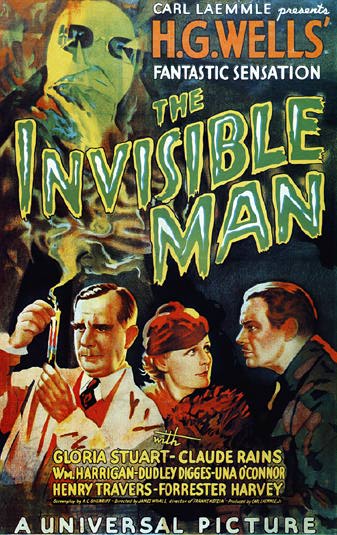 |
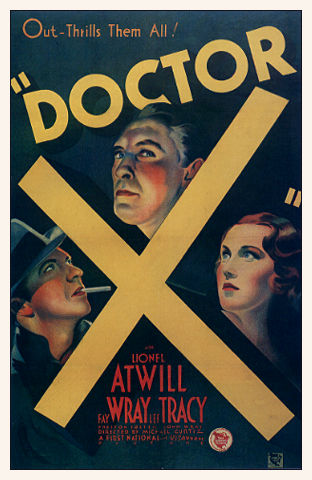 |
 |
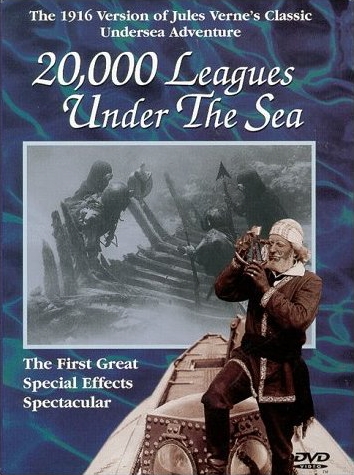 TWENTY THOUSAND LEAGUES UNDER THE SEA
TWENTY THOUSAND LEAGUES UNDER THE SEA
- Rating

- Film Production Credits
-
Release Date: 1916 Produced by: Universal Films (Carl Laemmle) Directed by: Stuart Paton Other: Underwater cinematography by
George and Ernest Williamson - Cast of Characters
-
Allen Holubar Capt. Nemo Dan Hanlon Prof. Arronax Curtis Benton Ned Land Edna Pendleton Arronax's Daughter Matt Moore Lt. Bond Jane Gail A Child of Nature - Synopsis and Commentary
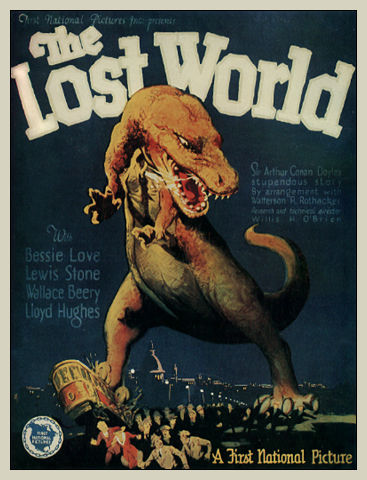
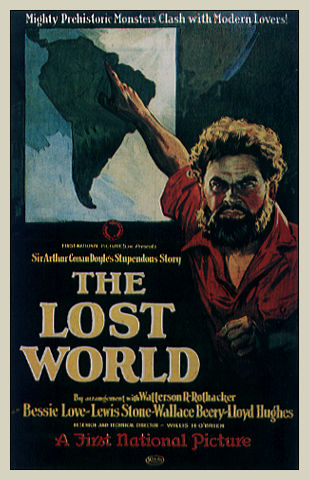 THE LOST WORLD
THE LOST WORLD
- Rating

- Film Production Credits
-
Release Date: 1924 Produced by: First National Pictures, Inc. Directed by: Harry O. Hoyt Other: Animation by Willis O'Brien - Cast of Characters
-
Wallace Beery Prof. Challenger Lewis Stone Sir John Roxton Bessie Love Miss Paula White Lloyd Hughes Edward E. Malone Alma Bennett Gladys Hungerford Arthur Hoyt Prof. Summerlee - Synopsis and Commentary

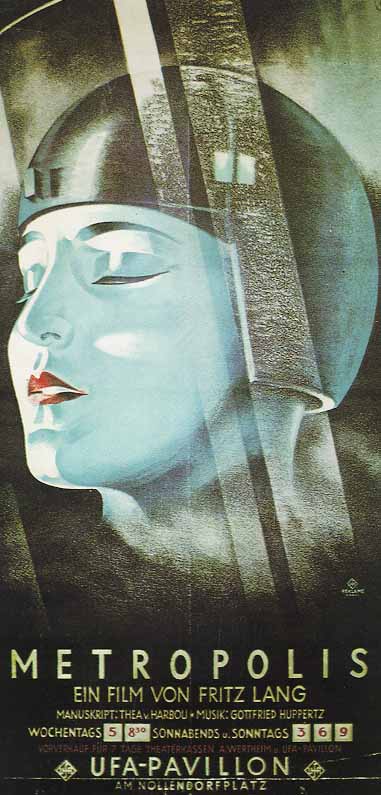 METROPOLIS
METROPOLIS
- Rating

- Film Production Credits
-
Release Date: 1927 Produced by: Erich Pommer Directed by: Fritz Lang Other: Based on the novel by Thea von Harbou - Cast of Characters
-
Alfred Abel Johan Fredersen Gustav Froelich Freder Fredersen Brigitte Helm Maria / The Machine Woman Rudolf Klein-Rogge C. A. Rotwang, Der Erfinder Fritz Rasp Der Schmale Theodor Loos Josaphat Erwin Biswanger George, No. 11811 Heinrich George Grot - Synopsis and Commentary
 DOCTOR X
DOCTOR X
- Rating

- Film Production Credits
-
Release Date: 1932 Produced by: First National Pictures, Inc. Directed by: Michael Curtiz Other: - Cast of Characters
-
Lionel Atwill Dr. Jerry Xavier Fay Wray Joan Xavier Lee Tracy Lee Taylor Preston Foster Dr. Wells John Wray Dr. Haines Harry Beresford Dr. Duke Arthur Edmund Carewe Dr. Rowitz Willard Robertson Detective O'Halloran - Synopsis and Commentary
 THE INVISIBLE MAN
THE INVISIBLE MAN
- Rating

- Film Production Credits
-
Release Date: 1933 Produced by: Univeral Pictures, Inc Directed by: James Whale Other: - Cast of Characters
-
Claude Rains Griffin Gloria Stuart Flora Cranley William Harrigan Dr. Arthur Kemp Henry Travers Dr. Cranley - Synopsis and Commentary
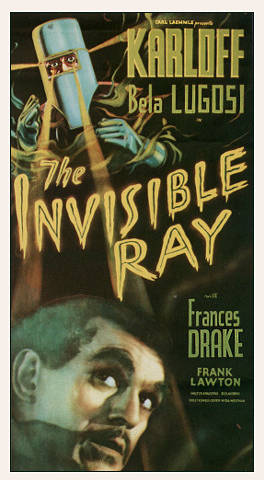 THE INVISIBLE RAY
THE INVISIBLE RAY
- Rating

- Film Production Credits
-
Release Date: 1936 Produced by: Universal Pictures (Carl Laemmle, Jr) Directed by: Lambert Hillyer Other: - Cast of Characters
-
Boris Karloff Dr. Janos Ruhk Bela Lugosi Dr. Felix Benet Frances Drake Diana Ruhk Frank Lawton Ronald Drake Walter Kingsford Sir Frances Stevens - Synopsis and Commentary
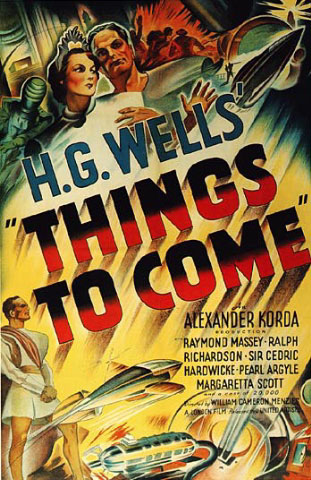 THINGS TO COME
THINGS TO COME
- Rating

- Film Production Credits
-
Release Date: 1936 Produced by: London Film Productions Directed by: William Cameron Menzies Other: Screenplay co-written by H. G. Wells - Cast of Characters
-
Raymond Massey John Cabal / Oswald Cabal Edward Chapman Pippa Passworthy / Raymond Passworthy Ralph Richardson The Boss Margaretta Scott Rowena / Roxana Cedric Hardwicke Theotocopulos - Synopsis and Commentary
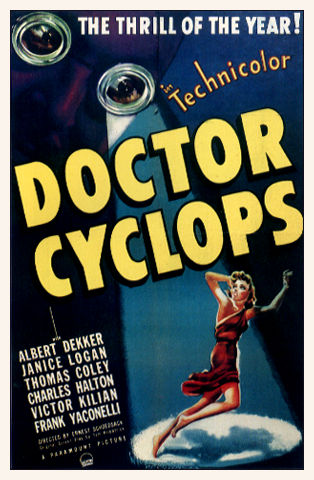 DR. CYCLOPS
DR. CYCLOPS
- Rating

- Film Production Credits
-
Release Date: 1940 Produced by: Paramount Pictures (Merian C. Cooper) Directed by: Ernest B. Schoedsack Other: - Cast of Characters
-
Albert Dekker Dr. Alexander Thorkel Janice Logan Dr. Mary Robinson Thomas Coley Bill Stockton Charles Halton Dr. Rupert Bulfinch Victor Kilian Steve Baker Frank Yaconelli Pedro Paul Fix Dr. Mendoza Frank Reicher Prof. Kendall - Synopsis and Commentary
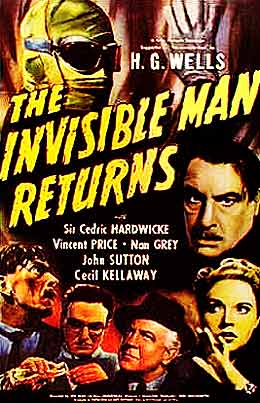 THE INVISIBLE MAN RETURNS
THE INVISIBLE MAN RETURNS
- Rating

- Film Production Credits
-
Release Date: 1940 Produced by: Univeral Pictures, Inc Directed by: Joe May Other: - Cast of Characters
-
Sir Cedric Hardwicke Richard Cobb Vincent Price Geoffrey Radcliffe Nan Grey Helen Manson John Sutton Dr. Frank Griffin Cecil Kellaway Inspector Sampson of Scotland Yard - Synopsis and Commentary
Copyright 2000 - 2006 -- All Rights Reserved